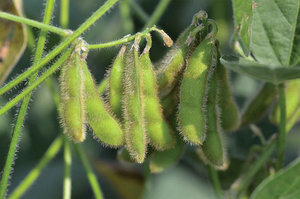Loren Giesler, plant pathologist at the University of Nebraska-Lincoln extension, is warning soybean growers of Sudden Death Syndrome symptoms. The condition can begin to show itself when soybeans are in mid- to late pod-filling stages.
According to Giesler, Sudden Death Syndrome is becoming more common in Nebraska, in particular, since it was first identified in the state about 12 years ago. Typically, it is found in small areas of fields, and it is often associated with soil compaction and high fertility levels.
The foliar symptoms of Sudden Death Syndrome may start with interveinal necrosis. Spots might coalesce to form brown streaks with yellow margins between leaf veins, says Giesler. Eventually, the leaves will drop, and the root system will begin to deteriorate.
In the event that a soybean plant shows signs of Sudden Death Syndrome, Giesler says it’s critical to split the stems to properly identify the condition.
“Accurate diagnosis is critical for proper management for the next soybean crop,” the plant pathologist says.
This year, soybean production is expected to inch upward two percent to 4.38 billion bushels, compared to 2016. Soybean harvest area is forecasted at 88.7 million acres, which is a seven percent increase from last year.
“Favorable conditions early in the spring allowed soybean planting to begin in many parts of the nation by the third week of April,” wrote the authors of the “Crop Production” report from the U.S. Department of Agriculture’s National Agricultural Statistics Service.
